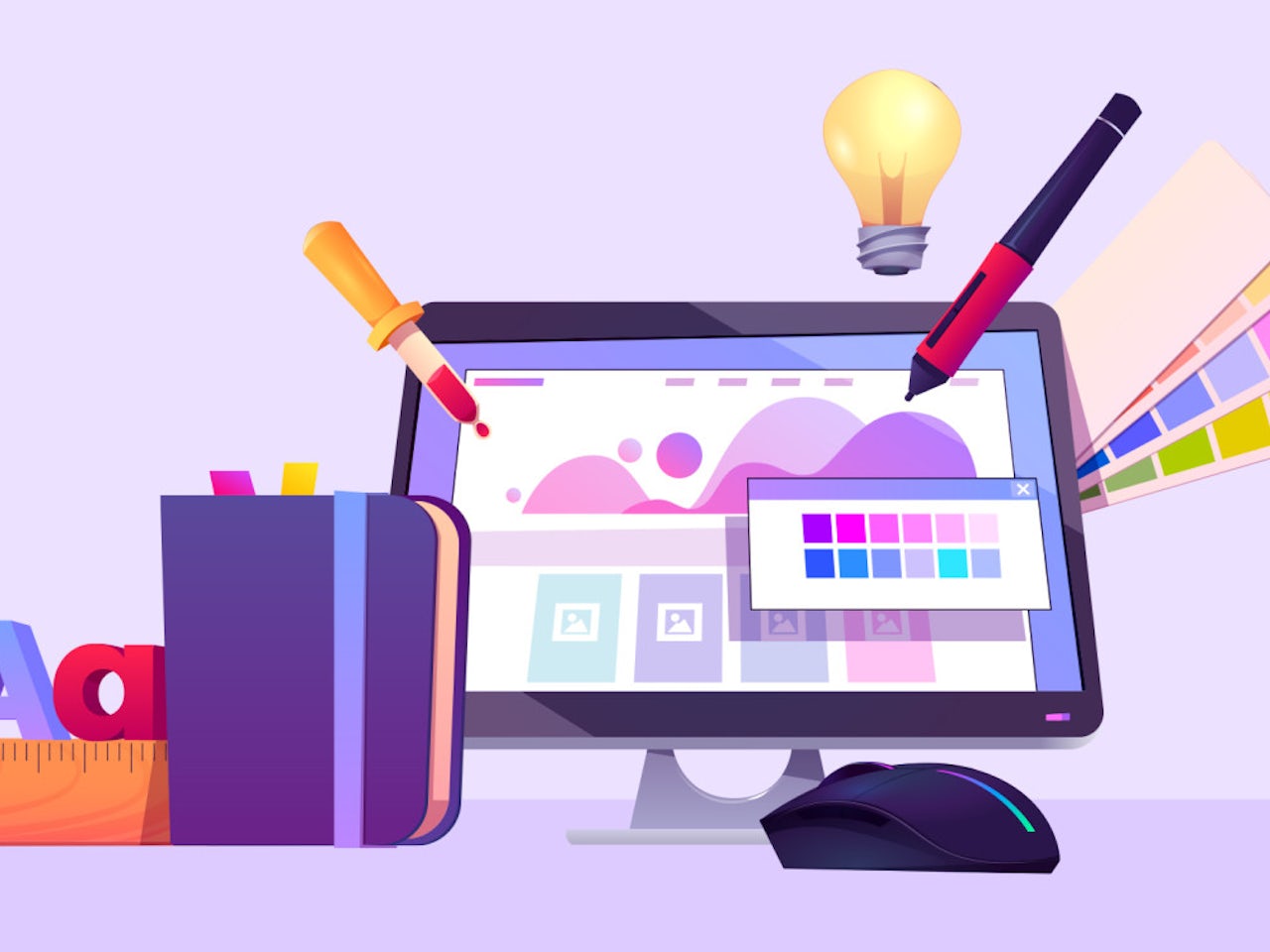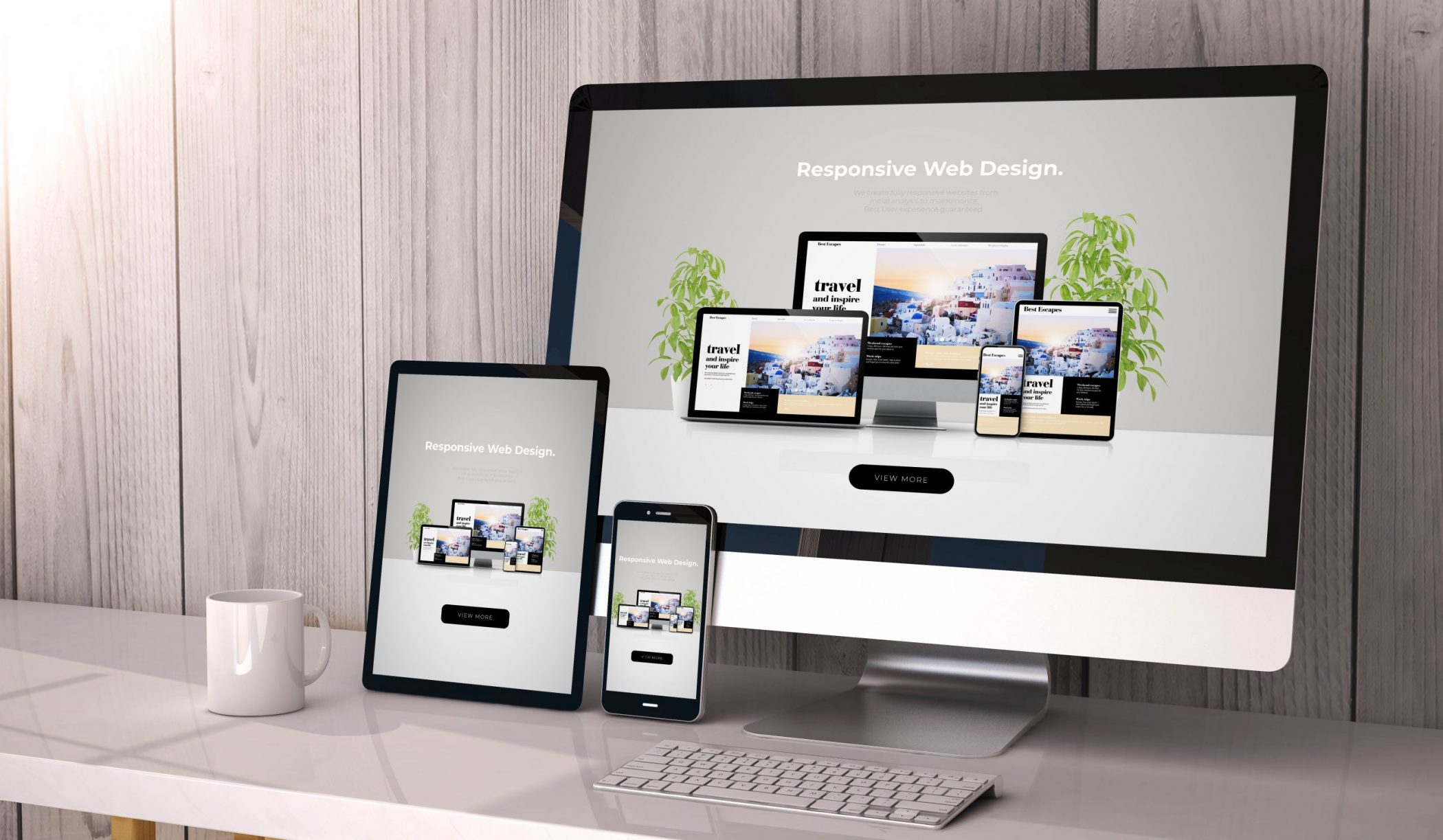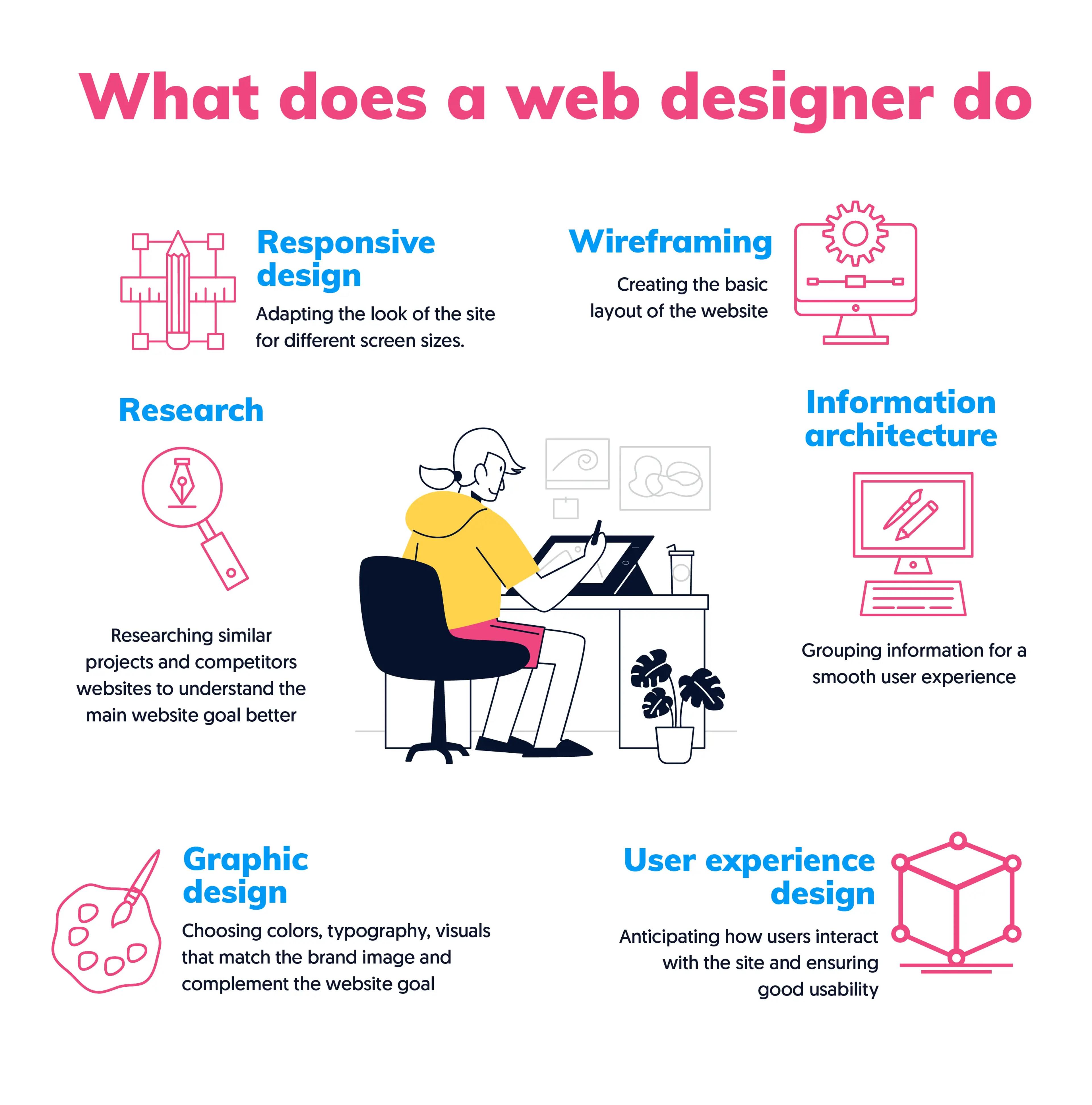Web Design London Ontario for Contemporary Business Sites
Web Design London Ontario for Contemporary Business Sites
Blog Article
Understanding the Trick Aspects That Comprise Effective Website Design Techniques
When it pertains to web design, understanding the key components can make all the distinction in individual involvement and contentment. You need to ponder elements like intuitive navigation and receptive design to create a smooth experience. However that's just the start. Each component plays an important function in assisting users through your web content and affecting their habits. Curious regarding what really drives these strategies? Let's explore deeper right into these crucial components.
The Value of User Experience (UX) in Website Design
User experience (UX) is the backbone of reliable website design, forming how site visitors interact with your website. When you focus on UX, you create an area where customers feel comfy, involved, and valued. A well-designed UX warranties that your audience can conveniently navigate your web content, find details promptly, and enjoy their overall experience.You has to consider your customers' demands and choices, as this understanding straight affects their contentment. By focusing on elements like load times, mobile responsiveness, and accessibility, you improve their experience considerably.Moreover, a favorable UX cultivates trust fund and urges repeat check outs, which can result in greater conversion rates. Bear in mind, users won't be reluctant to leave your website for a competitor if they run into frustration or complication. Ultimately, purchasing UX isn't nearly aesthetics; it has to do with developing a user-centric style that keeps site visitors coming back for more.
Crafting Intuitive Navigation for Seamless Browsing
When developing an internet site, crafting instinctive navigating is essential for guaranteeing site visitors can locate what they require without frustration. Start by organizing your content realistically; group related pages together to help customers forecast where to locate details. Usage clear, succinct labels for navigation links, preventing lingo that could confuse your audience.Consider implementing a hierarchical structure with a major menu and dropdowns for subcategories, making it very easy to drill down into certain topics. Include a search bar to empower users to locate material straight, especially on larger sites.Don' t forget mobile customers; identify your navigation continues to be available on smaller sized screens. Maintain it constant and straightforward throughout all pages to reinforce knowledge. By focusing on these elements, you'll produce a seamless surfing experience that keeps site visitors engaged and motivates them to explore even more of what you need to provide.
Receptive Style: Adjusting to Various Tools
As the range of devices individuals use to access the web proceeds to expand, guaranteeing your internet site is responsive has never ever been extra important. A receptive design indicates your site adapts effortlessly to different screen dimensions, from smartphones to desktop computers, providing a premium viewing experience. This flexibility not only improves customer complete satisfaction yet also improves your website's performance in internet search engine rankings.To create a receptive design, use versatile grids and layouts that immediately get used to the display's dimensions. Carry out CSS media questions to tailor styles based on gadget features. Prioritize necessary content, ensuring it's quickly available on smaller sized displays without frustrating users.
The Role of Visual Pecking Order in Effective Layouts
Aesthetic power structure is important for leading your audience's attention where it matters most. By successfully making use of focal points, typography, comparison, and color, you can develop a layout that connects your message plainly. Allow's explore just how these elements interact to improve your design.
Relevance of Focal Things
Focal points are important in website design, directing customers' interest to one of the most vital elements on a page. By tactically putting these focal points, you create a clear visual pecking order that enhances user experience. Think of what you desire your visitors to notice initially-- whether it's a call-to-action switch, a crucial picture, or significant information.Using comparison, positioning, and size, you can accentuate these centerpieces, making them stick out. Keep in mind, the a lot more famous the centerpiece, the much more likely customers are to involve with it. A properly designed design not only captures interest yet additionally leads customers through your web content flawlessly, ensuring they absorb the information that matters most. Focusing on focal factors is important for efficient communication on your website.
Color and Comparison Usage
Reliable use color and comparison can considerably influence exactly how customers perceive your site's web content. By picking a color combination that straightens with your brand name, you develop an emotional link with site visitors. High contrast between message and background improves readability, ensuring your message sticks out. Usage contrasting colors to highlight important elements, like call-to-action buttons, assisting customers' attention where it matters most.Additionally, balance is essential; way too much comparison can be frustrating, while too little might provide your content invisible. Executing an aesthetic hierarchy with color assists individuals browse your website with ease. You desire them to conveniently identify in between headings, subheadings, and body message, which boosts their total experience. Inevitably, reliable shade and comparison use maintains users engaged and motivates them to explore additionally.
Typography's Effect on Style
While it's very easy to overlook, typography plays a necessary function in shaping your site's style and general customer experience. It establishes an aesthetic hierarchy that guides visitors through your content. By choosing the right fonts, dimensions, and designs, you can stress vital details and develop a seamless flow. For example, making use of larger headings helps customers swiftly identify areas, while smaller body message gives detailed understandings without overwhelming them. Consistent typography not just improves readability however also strengthens brand name identification. Bear in mind to stabilize attractive font styles with readability to preserve expertise. Eventually, effective typography warranties your message reverberates, making your internet site much more user-friendly and engaging. Prioritizing this component can significantly elevate your style technique and impact.
Making Use Of Compelling Content to Involve Visitors
Just how can you maintain your visitors engaged and coming back for even more? The solution hinges on engaging content. Beginning by understanding your audience and what interests them. Create helpful short articles, enthralling stories, or enjoyable video clips that reverberate with their demands. Make use of a conversational tone to make your material relatable; it must really feel like a pleasant conversation instead of a lecture.Incorporate visuals like videos, photos, and infographics to break up message and maintain things dynamic. Do not forget to welcome communication-- ask concerns, motivate remarks, or include surveys to trigger discussions.Also, prioritize quality and conciseness. Ensure your major factors radiate through without unnecessary jargon or fluff. Remember, top quality over quantity matters; it's much better to have less, high-impact pieces than a slew of average ones. Ultimately, when your material's engaging, site visitors will certainly not just remain yet likewise share it with others.
The Effect of Color Psychology on Individual Communication
When you choose colors for your web site, think of exactly how they can influence individual feelings and assumptions. Colors can enhance your brand identification while likewise making sure availability via contrast. Understanding these elements can significantly improve user communication and involvement.
Color Meanings and Emotions
Recognizing shade psychology is necessary for developing an engaging website design, as the colors you pick can influence and evoke specific feelings user communications. Various colors can cause numerous sensations; for instance, blue commonly communicates trust and peace, while red can stimulate enjoyment or urgency. You lead your customers toward wanted activities when you integrate these shades thoughtfully. Yellow can influence optimism and happiness, making it reliable for contact us to action, while environment-friendly promotes leisure and a connection to nature. By straightening your color palette with the feelings you desire to generate, you boost user experience. Consider your target market and the message you desire to communicate, guaranteeing your color choices resonate and develop a lasting influence.
Brand Identity With Color Styles

Shade Comparison and Accessibility
While selecting a shade scheme is crucial, guaranteeing ample comparison is crucial for access. You desire your web site to be visually attractive, yet it must likewise cater to all users, consisting of those with aesthetic disabilities. High contrast between message and background enhances readability, making it simpler for everyone to involve with your content.Think regarding color psychology, too. Various shades evoke various feelings and reactions. By comprehending how shades effect user communication, you can assist individuals towards preferred actions. Making use of warm shades can produce necessity, while great colors could impart peace. Always evaluate your shade mixes to validate they satisfy access requirements, helping you develop an inclusive experience that reverberates with all visitors.
Maximizing Tons Rate for Enhanced Efficiency
Considering that customers anticipate websites to pack swiftly, optimizing lots rate is critical for improving efficiency and user contentment. A slow-loading site can irritate site visitors and drive them away, so you need to do something about it. Beginning by compressing pictures and using contemporary layouts like WebP. This can considerably lower file sizes without compromising quality.Next, minimize HTTP requests by incorporating CSS and JavaScript files. Fewer demands imply quicker lots times (website design london Ontario). Carrying out careless packing for video clips and pictures guarantees that material lots just when customers scroll down, boosting preliminary lots speed.Additionally, utilize browser caching to store frequently accessed resources, enabling repeat site visitors to appreciate faster loading times. Lastly, pick a reputable organizing get more info company. Their efficiency directly affects your website's rate
Frequently Asked Concerns
Just How Can I Measure the Performance of My Website Design Method?
To determine your website design strategy's performance, track customer engagement metrics like bounce prices, conversion prices, and average session period. Usage devices like Google Analytics to gather understandings and adjust your technique based on the data.
What Prevail Mistakes to Avoid in Web Design?
In internet style, prevent cluttered formats, irregular fonts, and slow filling times (website design london Ontario). Don't ignore mobile responsiveness or neglect customer screening. Prioritize accessibility and assurance clear navigating to improve user experience and maintain visitors involved
Exactly how Commonly Should I Update My Web Site Design?
You need to upgrade your site layout every 1 to 2 years, or whenever considerable changes take place in your brand or sector. Routine updates keep your site fresh, enhance user experience, and boost capability.

What Tools Can Help Analyze Customer Actions on My Site?
To analyze customer habits on your site, you can make use of tools like Google Analytics, Hotjar, or Crazy Egg. They'll provide understandings into customer communications, helping you make informed choices for improving your website's efficiency.

Exactly how Do I Pick the Right Font for My Website?
Choosing the right font for your website involves considering readability, style, and alignment with your brand name. Experiment with various typefaces, verify they're understandable on different devices, and keep consistency throughout your web pages for a cohesive appearance. Incorporate a search bar to encourage individuals to find material directly, specifically on larger sites.Don' t forget regarding mobile users; identify your navigation continues to be obtainable on smaller displays. Efficient usage of color and comparison can substantially influence how individuals view your internet site's web content (website design london Ontario). Comprehending color psychology is important for developing an appealing web layout, as the colors you choose can affect and stimulate particular feelings user communications. By understanding exactly how shades impact individual communication, you can direct individuals towards desired activities. Given that users anticipate internet sites to load swiftly, optimizing tons rate is important for boosting efficiency and user satisfaction
Report this page